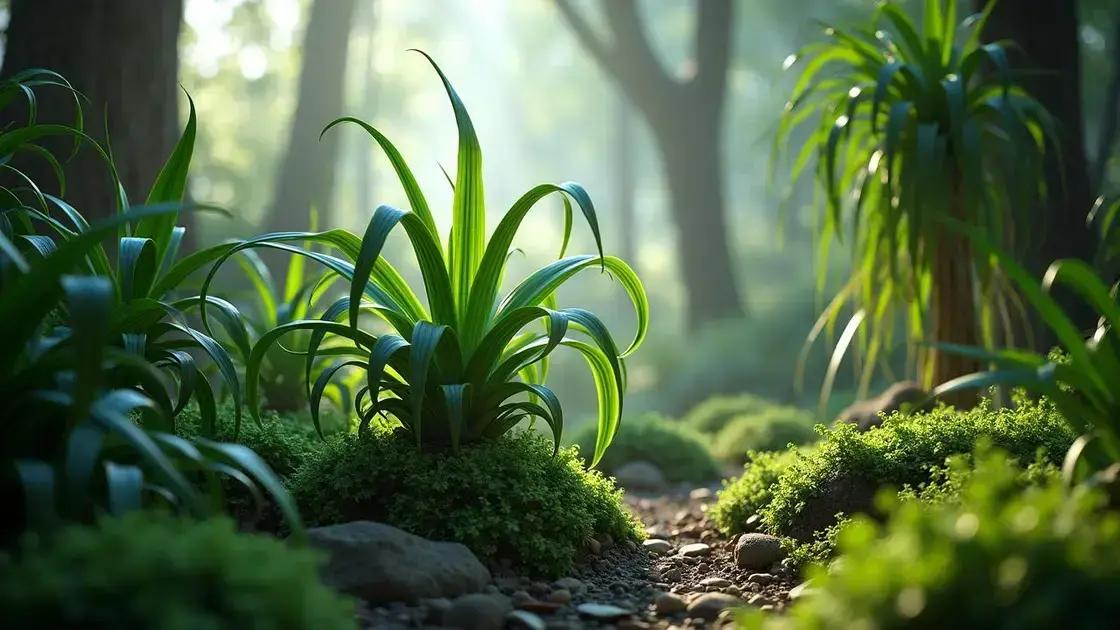How to Care for a Spider Plant: 5 Secrets to Thriving Greens
How to care for a spider plant may seem challenging at first, but with the right guidance, you can nurture a stunning piece of nature in your home. Imagine a lush green plant that not only brightens your space but also purifies the air. Learning the secrets to supporting your spider plant’s growth can be an enjoyable journey filled with discovery. Dive into our guide and unlock the potential of your indoor greens!
Table of Contents
ToggleUnderstanding the ideal watering schedule for spider plants
Understanding the ideal watering schedule for spider plants is crucial for their health and vitality. Proper moisture levels ensure these beautiful indoor plants thrive, producing lush green foliage and vibrant offshoots.
Spider plants prefer moderate watering to keep their soil slightly moist. Here are some key watering tips:
- Water your spider plant every 1-2 weeks, allowing the top inch of soil to dry between waterings.
- Use room temperature water to avoid shocking the plant.
- In the summer months, they may require more frequent watering due to increased evaporation.
- In winter, reduce watering to prevent root rot as the plant enters a dormant phase.
**Signs of Overwatering:**
- Yellowing leaves
- Soft, mushy roots
- Wilting despite wet soil
**Signs of Underwatering:**
- Brown tips on leaves
- Crispy leaf edges
- Droopy appearance
Additionally, checking the moisture levels in the soil using your finger or a moisture meter can help you determine when it’s time to water. Keeping an eye on your plant’s environment will help you maintain the ideal watering schedule for spider plants.
For those interested in exploring indoor gardening techniques, understanding how to care for various plants, including watering needs, is essential.
By following these guidelines, you’ll ensure your spider plant remains healthy and continues to grow beautifully.
Choosing the right soil requirements for healthy growth

Choosing the right soil requirements for healthy growth is essential for ensuring your spider plant thrives. The right soil composition provides the necessary nutrients and proper drainage to foster strong roots and vibrant leaves.
Spider plants prefer a well-draining potting mix that retains some moisture while allowing excess water to escape. Consider the following options for soil:
- Commercial potting mix formulated for houseplants
- Succulent and cactus mix which offers excellent drainage
- A blend of ordinary potting soil mixed with perlite for aeration
**Key factors in soil selection:**
- pH level should be slightly acidic to neutral (6.0 to 7.0).
- Organic matter enhances nutrient availability.
- Ensure the soil is light to promote airflow around the roots.
For best results, consider repotting your spider plant every couple of years to refresh the nutrients. Ensure the new soil is dry and well-aerated.
Along with soil selection, be mindful of water retention. Excess moisture can lead to root rot, which is detrimental to spider plants.
For enthusiasts interested in exploring indoor gardening techniques, understanding soil needs is a fundamental aspect of plant care.
By paying attention to soil requirements, you’ll set a strong foundation for your spider plant’s growth.
Best sunlight exposure for spider plants to thrive
Best sunlight exposure for spider plants to thrive is key in promoting healthy growth and vibrant foliage. These plants are known for their adaptability but prefer certain lighting conditions to reach their full potential.
Spider plants thrive best in bright, indirect sunlight. Here are some crucial points to consider:
- Direct sunlight can scorch the leaves.
- Too little light can lead to leggy growth and decreased vitality.
- Find a balance by placing your spider plant near a window with filtered light or using sheer curtains.
**Optimal lighting conditions for spider plants include:**
- **Bright, indirect light:** Perfect for steady growth.
- **Moderate light:** Can still thrive but may grow slower.
- **Avoid low light:** Insufficient light will cause overall weakness.
**Signs of improper lighting:**
- Brown tips on leaves indicate too much sun exposure.
- Stretched stems suggest insufficient light.
If you’re looking to explore your options for placement, consider moving your plant around until you find its sweet spot. For enthusiasts interested in exploring indoor gardening techniques, understanding light dynamics is vital in cultivating a vibrant indoor garden.
By providing the best sunlight exposure, you’ll not only enhance the beauty of your spider plant but also contribute to its overall health and resilience.
In conclusion
Caring for spider plants is a rewarding experience that enhances your indoor space and contributes to a healthier environment. By understanding their watering schedule, soil requirements, and sunlight exposure, you can ensure your spider plants thrive. Remember, these plants are resilient and will reward you with their lush greenery as long as you provide them with the right conditions.
For more information and tips on enhancing your indoor garden, don’t hesitate to explore additional resources. Happy gardening!

